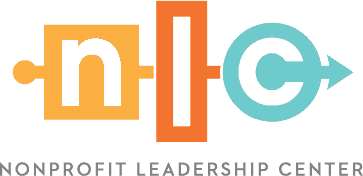In 2008, author and renowned philanthropy expert Dan Pallotta challenged nonprofits to find a better way to communicate organizational impact. More than a decade later, our sector still struggles to communicate how our work truly makes a difference.
How should nonprofits measure and articulate their impact? How do we communicate what social returns on investment look like? As a sector, we must begin answering these questions differently than we do today. By understanding our current challenges, we can chart a better path forward.
3 Pitfalls to Avoid When Communicating Nonprofit Impact
As a nonprofit funder, I see three common mistakes most charities make when it comes to demonstrating community impact:
1. Equating impact with activities.
Many nonprofits report impact by counting heads and dollars — sharing the number of events held, people served, volunteers engaged, dollars raised or other similar metrics. While it’s great that your organization may have served 100,000 people last year, funders and donors want to know not just what you did but why it matters. Of the individuals or families you served, how is your support changing and improving lives? How are those outcomes contributing to more significant improvements to our local economy and community? Instead of thinking about organizational impact in terms of listing tactical activities accomplished, funders want to know that you’re tracking meaningful metrics and driving programmatic outcomes that lead to enduring, positive change.2. Mistaking aspirations for outcomes.
Another common trend when it comes to nonprofit impact reports is elevating aspirations over actual results. For instance, impact reports often showcase lofty visions, such as “we’re developing kids to be good global citizens.” While that’s certainly a noble and necessary cause, it isn’t a concrete result, nor does it demonstrate how you’re making progress toward that outcome with your current programs and services. While communicating aspirations through your mission and vision are important, nonprofit organizations must connect programmatic specifics to those larger goals.3. Assuming the packaging can carry the message.
In some cases, organizations showcase beautiful infographics for their impact reports. While donor-centric and aesthetically pleasing packaging is important, your report design shouldn’t be superior to the content itself. A report that looks good but doesn’t answer the critical questions about why your work matters is just a prettier way of listing activities that doesn’t move your organization or our sector forward.3 Ways to Think Differently About Reporting Your Nonprofit Impact
So how can nonprofits think differently about measuring and reporting impact? Here are three things you can do to start.
1. Identify and measure the right performance metrics.
While the nonprofit sector has excellent resources for evaluating finances, including tax returns, audited financial statements and third-party evaluation resources from organizations like Charity Navigator and GuideStar, we lack a North Star when it comes to defining what lives changed and saved looks like. The first step to ensure meaningful impact reporting is to identify the right metrics to measure. Rather than counting activities, such as program participants, events, calls responded to, food distributed, etc., ask yourself more profound questions about why what you’re doing matters.- How is what we’re doing changing lives?
- How is our work contributing to positive changes in the overall community?
- If we were to put ourselves out of business because we accomplished our mission, what does success look like? What are the milestones we can measure and control to get there?
For example, Metropolitan Ministries — a nonprofit that cares for the homeless and those at risk of becoming homeless in our community — reports its activities accomplished but then connects them back to broader implications for why it matters. In 2018, they reported helping more than 31,000 families, serving more than 1.6 million meals and providing nearly 200,000 nights of safe shelter for children and their parents. They then connect that back with how it is making a real difference, showing that almost 93% of families maintained their housing for at least one year after graduating from their self-sufficiency program and that 98.5% of families have not returned to homelessness. Combining both activities with transformational impact is essential to go from highlighting what your nonprofit organization does to why it matters.
2. Tell the right story.
Once you’ve identified what you’re going to measure and how, telling your story clearly and compellingly is critical to inspire confidence and continued support among donors and funders. What should you highlight? Where do you begin?Charity watchdog groups like Charity Navigator and GuideStar offer some helpful suggestions for what to include when you’re creating a community impact report. Both recommend several vital questions that every nonprofit should answer transparently for donors.
Charity Navigator advises donors to ask nonprofits these questions:
- What is your organization’s mission?
- What are your organization’s goals?
- What progress is your organization making toward its goals?
- What sources are available to increase my confidence in your work?
GuideStar, a platform for nonprofits to tell their stories, suggests five questions every charitable organization should answer when it comes to charting their impact:
- What are you aiming to accomplish?
- What are your key strategies for making this happen?
- What are your organizational capabilities for doing this?
- How will you know if you’re making progress?
- What have you accomplished so far, and what’s next?
Making sure answers to these questions are appropriately reflected in your impact communications is a helpful place to start.
3. Convey your story in a way that will resonate with your audience.
Finally, while understanding what success looks like and tracking your performance is critical, communicating and packaging your story to validate and motivate your key audiences is crucial. It’s not enough to list long paragraphs about how great your organization is and all you’re doing. Nonprofits must think about impact in terms of what it means to their target audiences, how it is of value to them and why they should care. As you craft your impact report and determine how to best package it, here are a few considerations:- When it comes to messaging and content, be sure to position your impact in terms of your audience, making it more about them and less about your organization.
- Think through the best format for your audience. If you’re going to be presenting a progress report, a PowerPoint deck might be best. If it is primarily read online, something short and visual with graphics and limited text may be ideal. In other instances, a video may be best.
- Make your impact real. In addition to quantitative data, share stories and/or quotes from real people or organizations that have benefited from your work. An impact report shouldn’t just convey progress; it should inspire pride in your audiences and motivate their continued support.
As leaders in the nonprofit community, we challenge our sector to do the hard work of better communicating our impact. Our neighbors, constituents, donors and participants deserve our best when it comes to making a difference.
Explore the Nonprofit Leadership Center’s Impact Report
Curious about how the Nonprofit Leadership Center evaluates and measures the impact of our work? We invite you to explore our latest impact to assess the difference professional development training and leadership coaching have on nonprofit leaders and organizations.






